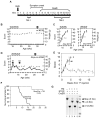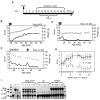Reversal of neurological defects in a mouse model of Rett syndrome
- PMID: 17289941
- PMCID: PMC7610836
- DOI: 10.1126/science.1138389
Reversal of neurological defects in a mouse model of Rett syndrome
Abstract
Rett syndrome is an autism spectrum disorder caused by mosaic expression of mutant copies of the X-linked MECP2 gene in neurons. However, neurons do not die, which suggests that this is not a neurodegenerative disorder. An important question for future therapeutic approaches to this and related disorders concerns phenotypic reversibility. Can viable but defective neurons be repaired, or is the damage done during development without normal MeCP2 irrevocable? Using a mouse model, we demonstrate robust phenotypic reversal, as activation of MeCP2 expression leads to striking loss of advanced neurological symptoms in both immature and mature adult animals.
Figures




References
-
- Amir RE, et al. Nature Genet. 1999;23:185. - PubMed
-
- Neul JL, Zoghbi HY. Neuroscientist. 2004 Apr;10:118. - PubMed
-
- Armstrong D, Dunn JK, Antalffy B, Trivedi R. J Neuropathol Exp Neurol. 1995 Mar;54:195. - PubMed
-
- Kishi N, Macklis JD. Mol Cell Neurosci. 2004 Nov;27:306. - PubMed
-
- Chen RZ, Akbarian S, Tudor M, Jaenisch R. Nat Genet. 2001;27:327. - PubMed
Publication types
MeSH terms
Substances
Grants and funding
LinkOut - more resources
Full Text Sources
Other Literature Sources
Medical
Molecular Biology Databases
Research Materials

